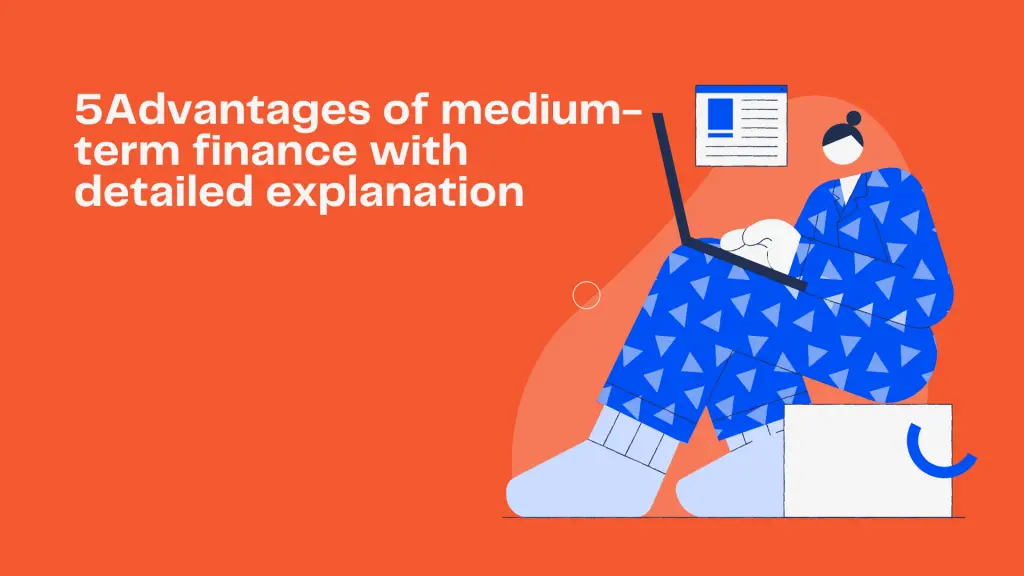When it comes to financing for businesses, there are many options available. A business can use different sources of finance, such as equity and debt, to finance its activities.
These are the two main types of finance that are available to businesses. While each source may have its advantages and disadvantages, each business must decide which source is right for its requirements.
Apart from deciding which source of finance is necessary to meet its requirements, a business must also decide how long it needs finance.
Usually, finance can be short-term and long-term. A business can use short-term finance to fund temporary cash shortages or short-term operations.
Short-term finance generally refers to finance that spans between 1-2 years. On the other hand, it can use long-term finance to fund large, long-term projects. Long-term finance is finance that lasts for five years or more.
However, these aren’t the only two options a business may have available. It can also obtain medium-term finance. Medium-term finance is generally rarer than the other two types of finance.
It spans over 3-5 years. Usually, a business uses medium-term finance for specific purposes, for example, when long-term finance isn’t available or for deferred revenue expenditures.

Medium-term finance can come with advantages of both short-term finance and long-term finance, but may also inherit their disadvantages. Medium-term finance mostly consists of loans because equity is generally a long-term source of finance.
5 Advantages of Medium-term Finance
The main advantages of using medium-term finance for a business are as follows. As mentioned above, most of these advantages relate to loans because medium-term finance does not contain equity.
1) Regular repayments
Medium-term finance comes with a regular repayment schedule that is straightforward to understand. A business must make repayments monthly or biweekly in this type of finance.
Regular repayments make it easier for businesses to predict expenses and help with budgeting. It can also help them manage their cash flows accordingly.
The terms of medium-term finance are preset in the loan contract between the financial institution and the business acquiring the loan.
2) Fixed interest rates
Besides the fixed repayment schedule, medium-term finance also comes with fixed interest rates. The interest rate is a part of the contract for finance and, therefore, predetermined.
A fixed interest rate has the same advantage as regular repayments. It helps a business in budgeting and cash flow management.
Fixed interest rates also make calculating the interest payments for each period straightforward, as the same interest rate applies over the finance life. It also helps the business understand how much the finance costs.
3) Credit score
Medium-term finance is a great way for businesses to improve their credit scores, especially ones with a bad credit history or credit rating.
Due to the regular repayments and interest rates, businesses understand how much they need to pay and budget for it accordingly. That means it can make it easier for them to predict payments and make them on time.
A business can improve its credit scores by receiving and repaying the finance on a timely basis. Improved credit scores can be highly beneficial for businesses and can help them secure finance with better terms in the future.
4) Higher loan amounts
Using a medium-term loan can also give business access to more loans than a short-term loan.
The business also receives the loan in a short period, thus, making it easier to plan activities and start operations using the received funds easily.
A business can receive as much as $500,000 in cash with medium-term loans. This amount is enough for some small and medium-sized businesses to start projects and continue operations.
Since the loan spans 3-5 years, the higher loan amount should also be straightforward to repay.
5) Less risky for lenders
Medium-term loans can also be beneficial for lenders. Usually, lenders require the borrower to have a good credit score before providing the loan.
It allows lenders to mitigate the risks associated with default on repayments by the business. That is also why medium-term loans are easy to obtain for the borrower.
The lower risk for the lender also translates to better terms for the borrower such as lower interest rates, as already mentioned above.
Conclusion
Businesses need finance from different sources to fund their operations. The finance may come from various sources, such as equity or debt.
They also need to decide the length for which they require the finance for along with its source. Usually, finance can come for either short or long term. However, some types of finance may also come in the medium term.
Medium-term finance may have a lot of advantages, including regular repayments, fixed interest rates, and improved credit scores.
Businesses can also obtain a higher loan using medium-term finance. Medium-term finance is also a lower risk for the lender.
